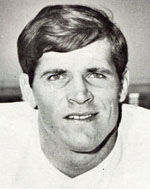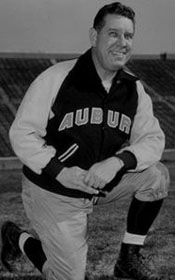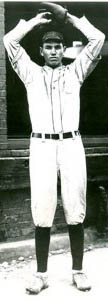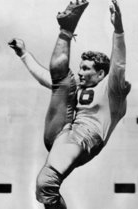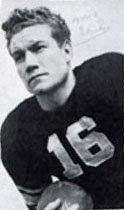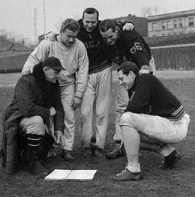Tiger Rag's 2014 LSU Football Preview has a revealing article about Leonard Fournette.

Young enrolled at San Jacinto High in January 1933.
Come fall, Young joined the football team and its new coach, Wylie Summers.
Summers changed Bussey to a new position the following season.
That set the stage for the big game with Reagan.
By the end of the season, Young Bussey had become one of the most widely heralded athletes in Texas. Continued below ... Reference: Young Bussey, Young Stud: An All-American Legend, Ralph B. Cushman (1993) Katie Lee Bussey couldn't believe the news coming from the radio beside her bedside Sunday evening, September 8, 1935.
 Since Young Bussey had publicly committed himself to play for LSU, most schools had stopped recruiting him.
In the meantime, Bussey still had his senior year of high school ahead of him.
Young now turned his attention to basketball, his favorite sport.
 During the spring of 1936, more than fifty institutions of higher learning expressed a desire to help Bussey continue his education.
Young now traveled to Baton Rouge to begin his college career.
Continued below ...
Reference: Young Bussey, Young Stud: An All-American Legend, Ralph B. Cushman (1993)
Top of Page
Continued below ...
Continued below ...
 1938 LSU "A" Team; Young Bussey is #16.
After his teams lost only two regular season games in his first three years as head coach, Moore's fourth Tiger squad proved to be a major disappointment.
 Ole Miss scores against LSU; Bussey is #16.
Bussey made the trip with the team to Auburn for the next game.
Young saw action in the 32-0 romp over Southwestern Louisiana Institute.
Bussey made the news reports of the finale against Tulane but in a negative way.
  L: LSU-Tulane Action; R: Tulane star "Jitterbug" Kellogg scores. Continued below ...
Reference: Young Bussey, Young Stud: An All-American Legend, Ralph B. Cushman (1993)
The Fighting Tigers II: LSU Football, 1893-1980, Peter Finney (1980) Top of Page
 In the meantime, the NFL staged its fifth draft on December 9.
It didn't take Bussey long to irritate Halas as he had every other coach he played for.
The Pearl Harbor attack occurred the final Sunday of the regular season.
If Bussey had clashed with his football coaches, you can imagine how frustrating he found military discipline.
Reference: Young Bussey, Young Stud: An All-American Legend, Ralph B. Cushman (1993)
The Fighting Tigers II: LSU Football, 1893-1980, Peter Finney (1980) Top of Page |


